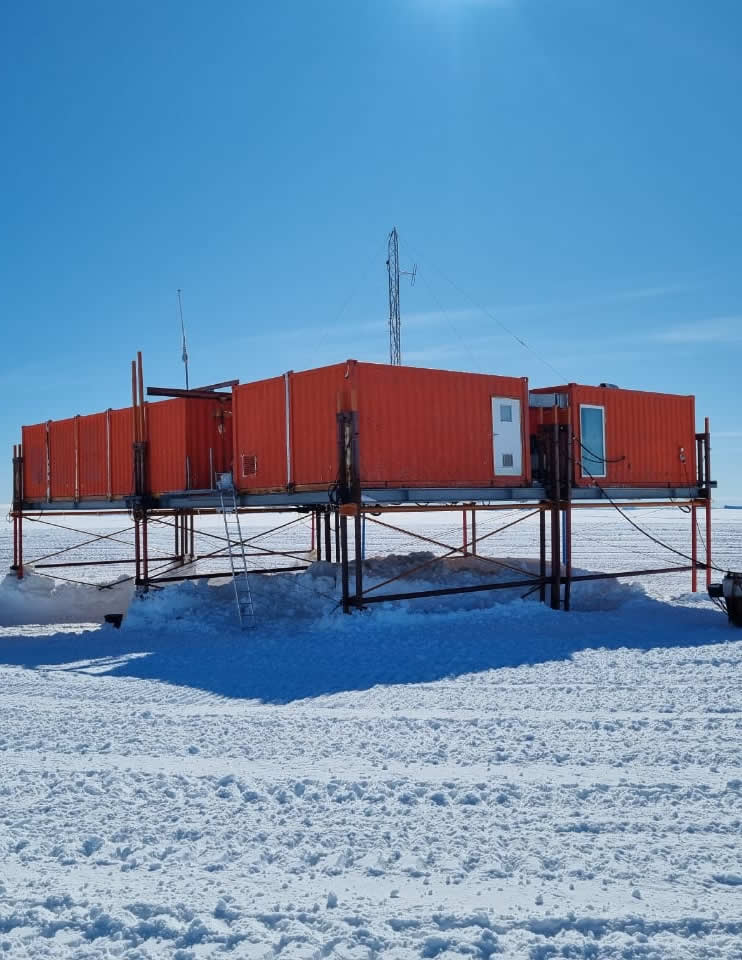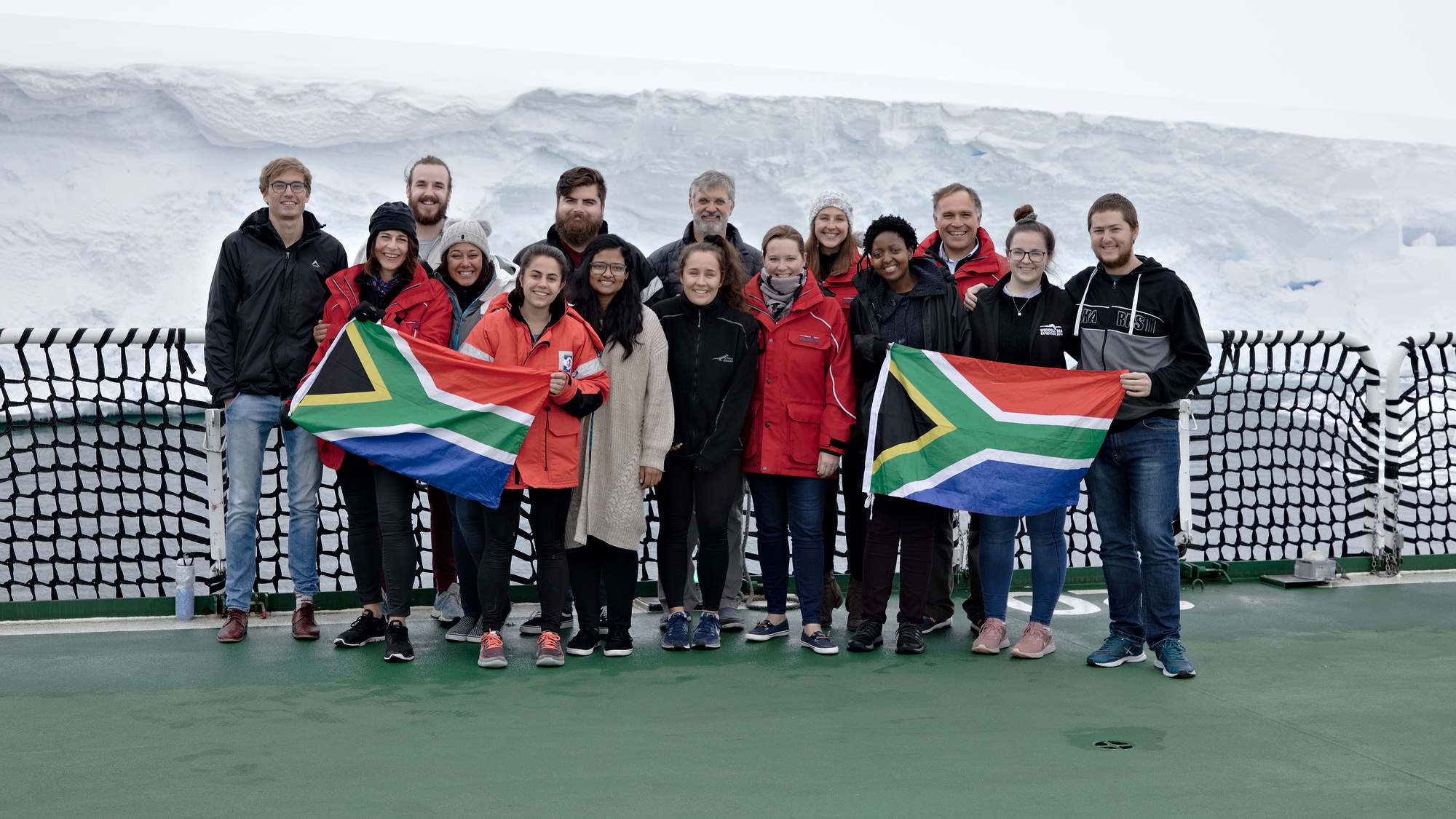ANTARCTICA – THE LAST TRUE WILDERNESS
Antarctica, the continent that surrounds the South Pole, remains the most mysterious continent on earth. No-one lives there permanently.
Antarctica is the coldest, windiest and driest place on earth. It is almost entirely covered in ice. The lowest temperature measured was -88 degrees Celsius. In the interior, wind speeds reach up to 350 km/h. The annual rainfall is about 50mm inland and 35mm along the coast (South Africa's average annual rainfall is 464 mm, and the world average is 857 mm). During summer, Antarctica has 24-hour daylight, no nights. During winter, Antarctica has 24-hour nights when it is continually dark for about one month. Antarctica is so cold because it is:
- surrounded by an ocean with cold currents;
- the windiest place on Earth;
- completely covered with snow. Since snow is white, it reflects rather than absorbs the sun's rays; and
- situated at an extremely high altitude (average 2 500 m).
Although the region is harsh and very few people live there, it is very vulnerable.
SOUTH AFRICA IN ANTARCTICA
South Africa's involvement in Antarctica and the Southern Ocean Islands dates back to the earliest voyages of discovery, due to the then Cape of Good Hope's position as a stop-over for explorers, whalers and sealers (people hunting whales and seals).
In 1959, the first South African expedition to the Antarctica was undertaken. The expedition established a permanent presence for South Africa in Antarctica which is still there to date. South African took over an abandoned Norwegian base on the edge of the ice shelf, some 4 000 km south of Cape Town. This base was replaced several times, because a base built on the ice shelf drifts out to sea with the ice with time and is eventually covered with snow.
The most recent South African base, SANAE-IV, is located 170 km inland, built on a rocky outcrop peeping out of the white snow. The new base was completed in 1997.
INCREASED UNDERSTANDING OF NATURAL ENVIRONMENT AND LIFE IN THE AREA THROUGH APPROPRIATE RESEARCH, SCIENCE AND TECHNOLOGY
SOUTH AFRICAN BASE, SANAE-IV
The frame of the base is made of steel and the outer layer is rigid, pre-constructed foam and fibreglass panels. The base is built on stilts to allow for wind and snow to flow underneath the base and to thus prevent the accumulation of snow on top of the base. The roof and bottom panels are painted bright orange which makes it easier to see the base from the air. The living quarters are heated by the heat exchangers of the electric power generators. Fresh water is obtained by melting snow.
HOW TO GET THERE?
Antarctica is about 4000km away from South Africa. It takes 10-15 days to travel there by ship, the time depending on how much ice there is along the way. It can only be reached between November/December and April/May. The SA Agulhas (and now the now the new SA Agulhas II is the department's research and supply ship. The vessel transports people and cargo to its three bases in Antarctica and on Marion and Gough Islands. The ship is therefore also a scientific platform allowing for research to be conducted, weather observations to be made and weather to be released as it sails.
Much of the South African researchers' work in the Antarctic and Southern Ocean Islands region is aimed at protecting the fragile environment. The mission of the department is to increase our understanding of the natural environment and life in the area through appropriate research, science and technology.
WHO OWNS ANTARCTICA?
The Antarctic continent does not belong to any state or government. South Africa and 48 other member nations belong to the Antarctic Treaty. Through the Antarctic Treaties Act, Act No. 60 of 1996 and National Environmental Management Act (NEMA), Act No. 107 of 1998,it is determined how the area is managed. Countries that sign this treaty undertake to ensure that the Antarctic region will only be used for peaceful and scientific purposes and to protect and preserve the environment.
INDIGENOUS PLANTS AND ANIMALS
Antarctica is a hostile environment and most of the plants and creatures in South Africa will not survive there. Lichen – a plant composed of fungus and algae – is found on the rocky outcrops. Invertebrates (animals without backbones) such as ticks and mites are also found there. Larger land animals include penguins and seals. The surrounding ocean is the home of whales, which feed on krill and sometimes seals and penguins. A few bird species are also found on Antarctica.
SCIENCE IN ANTARCTICA
Studies done in Antarctica are critical to enhancing the understanding of the entire Earth system. Signals that researchers pick up in Antarctica tell us more about global climate changes in the past, as well as possible future changes. The following are some interesting research projects that are being undertaken in by South Africans in Antarctica.
Physical science
This is focused on geomagnetic and space weather related observations. It includes physics and chemistry. Physical science research is conducted all year round in Antarctica. Experiments include a network of high-frequency radars used to study the Earth's ionosphere; observing geospace (the area of space that surrounds Earth) from Earth; research on cosmic rays (very high energy charged particles from the cosmos); and observations of the magnetosphere.
This physical science observations done in Antarctica is important because space weather, resulting from outbursts on the sun, always has a much greater impact near the poles, than anywhere else on Earth.
Studying the oceans (oceanography)
Studying the oceans south of Africa contributes to our understanding of the weather and climate of Southern Africa. Biodiversity in Antarctica and the islands and the Southern Ocean provide exciting research opportunities.
Oceanographers from department and partner institutions study the importance of the main current that flows around Antarctica – called the Antarctic circumpolar current – and how it changes in temperature, salinity, and density. They also study the effect of this current's movement and velocity on the Prince Edward Island ecosystem.
Engineering science
Engineers do research into how South Africa can ensure a sustainable presence in Antarctica. They study energy generation and waste management, solar and wind energy, reducing air pollution, heating and ventilation of the bases, and improving the living conditions at the bases.
They also study energy and waste management of the base, renewable energy systems and the impact and cost of diesel engines which are used to generate electricity and power vehicles in Antarctica.
This team is also developing better support systems for SANAE IV, which is vulnerable because of the snow that accumulates around the base.
Biological science
There may not seem to be much biological activity in Antarctica, until one takes a closer look. Studies are about the effects of humans on the micro arthropods (animals that have segmented bodies and jointed, hollow legs such as spiders, insects and crustaceans) of Antarctica.
WEATHER
The South African Weather Service (SAWS) collects data on weather and the climate in Antarctica and on the Southern Ocean Islands, and have weather offices at SANAE IV, Marion and Gough Islands. They also gather data on ozone levels at SANAE, which can be used to study trends in ozone depletion.
- Each expedition is made up of the following personnel:
- 1 Doctor
- 2 Diesel mechanics
- 1 Electrical engineer / technician
- 1 Mechanical engineer / technician
- 1 Electronic engineer / technician
- 1 Senior meteorologist
- 2 Physicists (electronic / electrical engineers)
The over-wintering team spends approximately 15 months on the continent; of which 10 months is in total isolation until the next relief team arrives.
![]()
LEGACY: WEDDEL SEA EXPEDITION
16 April 2018 - The University of Cape Town’s Dr Sarah Fawcett was interviewed on the Azania Mosaka show on Radio 702.
Dr Fawcett spoke about SA’s research partnerships in Antarctica and spoke about the excellent work being done by DFFE through the SA Agulhas II.
Link to listen to the interview » South Africa to play key role in unprecedented international scientific expedition.



